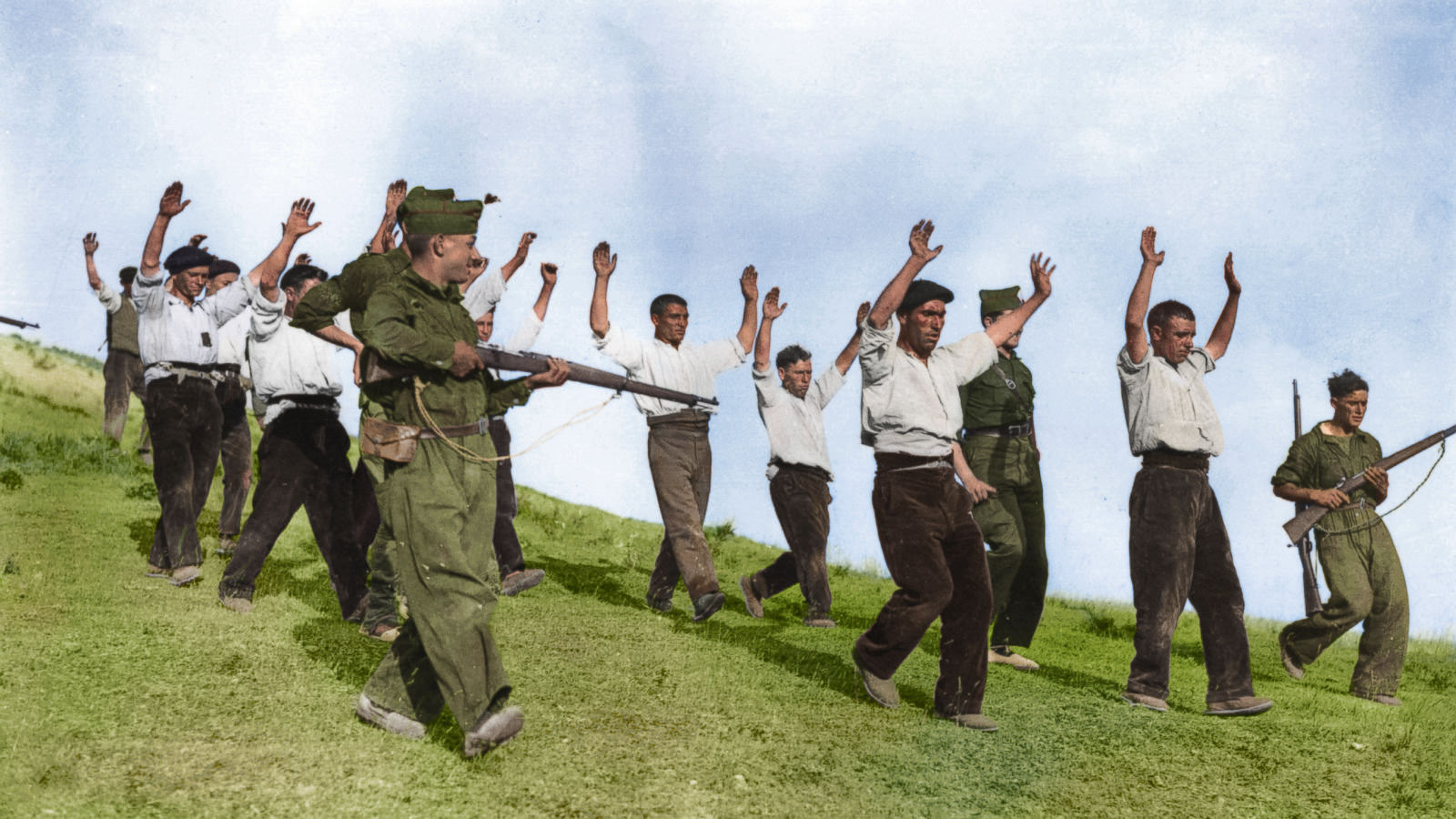Written by James Matthews.
On 17 July 1936, a faction of the Spanish army rose up against the Second Republic, triggering a violent conflict that developed into the Spanish Civil War as groups loyal to the government rallied to its defence. The military plotters essentially considered themselves to be defending traditional Spain from the threat of social revolution and regional separatism. In the days following the partially successful coup d’état, the two antagonistic camps scrambled to generate stopgap armed support. The forces available to the Republic immediately after the uprising were a disjointed combination of party and union-based volunteer militia, reinforced and at times led by members of both the Spanish security and armed forces. In Republican-held territory, the regular pre-war conscript army disintegrated and government authority in many places collapsed. Although some of these former soldiers joined the conflict as volunteer militiamen, the army effectively ceased to be a tool at the state’s disposal.
Republican Spain’s defence was therefore overtly political from the outset and was carried out by militant Spaniards prepared to fight in the Republic’s name – not only political republicans, but also socialists, anarchists and communists who hoped to advance their own political agendas, including revolution, in the name of the Republic. It was in this early period of the conflict that militia units began electing political delegates: trusted militants to act as intermediaries between militia forces, their political parties or unions and the Republican government.
But a major problem for the Republic was that the fighting continued far longer than anyone could have predicted at the outset, and the militia columns were regularly defeated. However, once the government began to re-establish its control and organize the militia units into a regular army, the post of political delegate was formalized and the role of political commissar officially introduced in the structure of the emerging Republican Popular Army.
Commissars’ central role was to organize the Popular Army’s political instruction, which was considered essential for combatants’ morale. A leaflet published for new recruits informed them that the commissars were in ‘constant touch with their soldier comrades, and at all times evaluating their fair needs, resolving their doubts and reaffirming their combative spirit’. Santiago Álvarez, a high-ranking commissar during the war, later wrote that a commissar’s role was to ‘orient, stimulate, guide and, as a last recourse, convince [their political charges] with their behaviour’. Moreover, Popular Army commissars were held directly responsible for the morale of the soldiers they were tasked to inspire and were blamed when their charges’ political preparation was deemed faulty.
For this ambitious task, commissars relied primarily on two types of vehicles to reach combatants: political speeches and trench publications. The two modes were intricately linked, however, because commissars were responsible for selecting material for the press and often the final edition. Commissars also played a central role in combatants’ day-to-day routines, particularly those that could affect the fighting spirit and readiness of Republican soldiers. They organized classes and were responsible for maintaining soldiers’ centres, known as Casas del Combatiente, which stocked books and games for soldiers, as well as allowing them access to a radio. In October 1937, over 40,000 men regularly attended classes in the Army of the Centre (covering the Madrid front) alone. This emphasis on emancipatory education was a fundamental departure from the pre-civil war army, which held literacy in low regard.
One of the most controversial facets of the Commissariat is the evidence of political conflicts between different factions defending the Republic. Both contemporaries and subsequent observers generally agree that the Communist Party of Spain, the Partido Comunista de España, or PCE, was able to dominate the political commissariat, although there is disagreement about the causation. It is important to emphasise that while Socialists and Anarchists resented the PCE domination of the commissariat, they did not question the commissariat as a necessary institution. But certainly, communists were better represented among commissars in the Army of the Centre and may have accounted for 80 percent of the force.
What is clear, though, is that political wrangling affected the commissariat. As early as June 1937, the situation was considered so detrimental that the defence minister, Indalecio Prieto, prohibited recruiting soldiers to political parties and organizations. For example, in May 1938, a report from the commissariat stated that some commissars ‘do not yet know what their task is, despite the time in their posts’. The criticism was against the ‘politicking of this and that Commissar General, and whether they belong to this or that political party’.
Republican Popular Army commissars were, therefore, a central part of the Republic’s militarization and mobilizing campaign. The system was born in an impromptu manner from the serious dislocation that the Republic faced when defending itself against a coup without the control of reliable armed forces. As ideologized militants from political parties and unions rallied to the Republic’s defence in the summer of 1936, it was consistent to institute political representatives in the battlefield. Once these were in place, however, parties and unions wanted to retain their influence in the armed forces as the Republic militarized. The most acceptable solution, which made it viable to continue to refer to a revolutionary people’s army, was to institutionalize the system of political commissars within the emerging Popular Army’s structure.
James Matthews is an independent scholar and the author of Reluctant Warriors: Republican Popular Army and Nationalist Army Conscripts in the Spanish Civil War, 1936-1939 (Oxford University Press, 2012). He delivered the Annual Lecture of the Centre for the History of War, Media and Society on 7 November 2017. Image Credit: CC by Cassowary Colorizations/Flickr.

